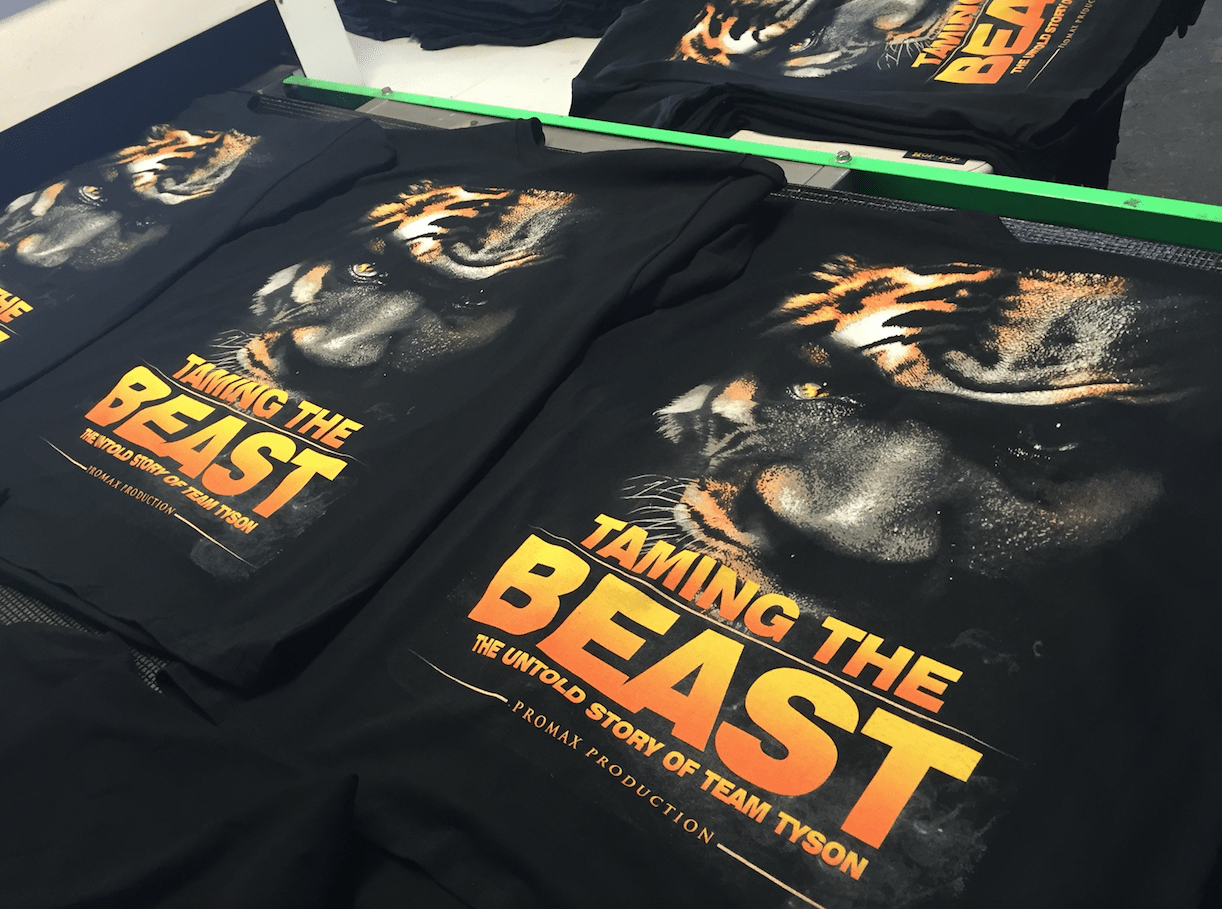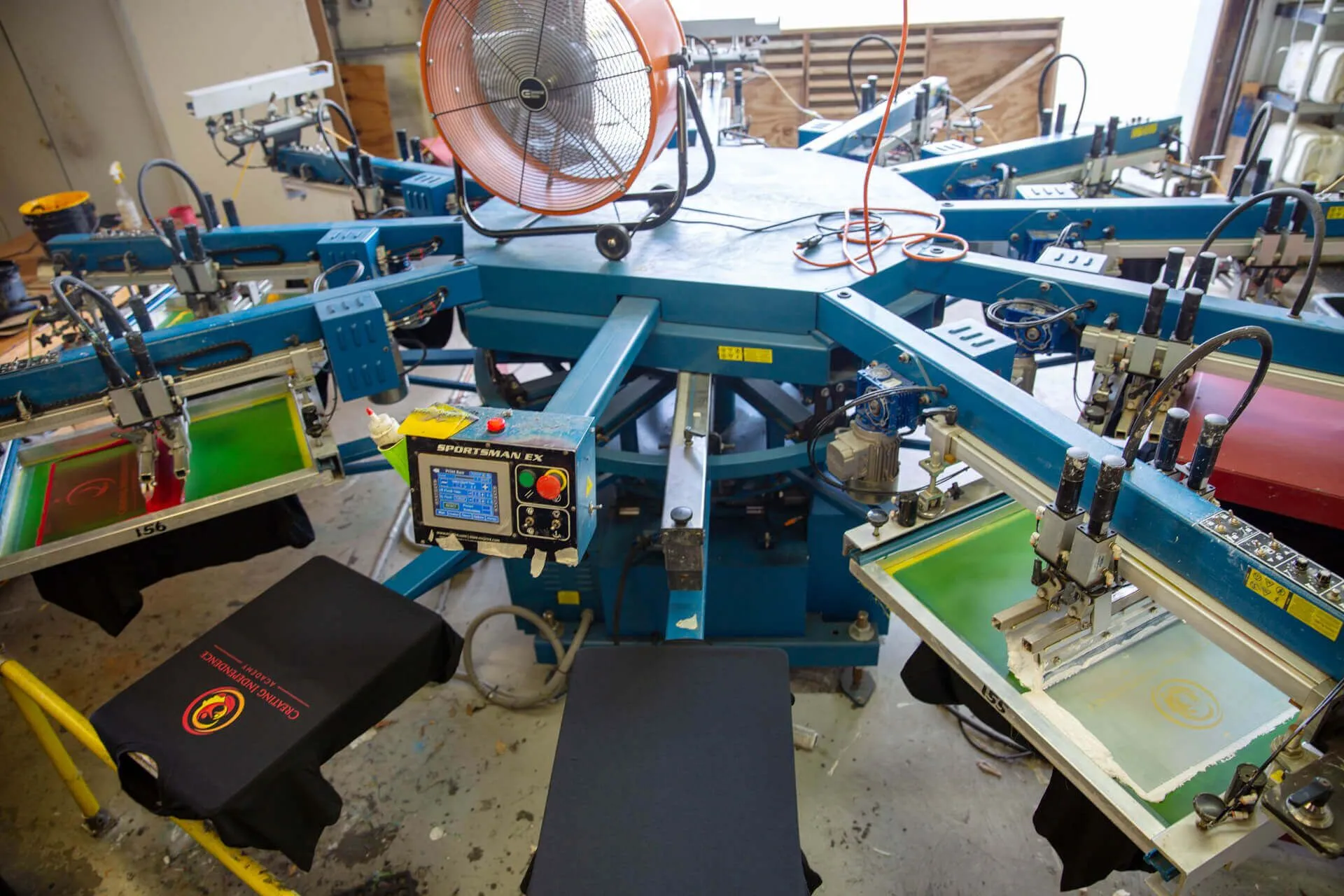Silk Screen Printing for Bold and Lasting Designs
Silk Screen Printing for Bold and Lasting Designs
Blog Article
The Ultimate Screen Printing Package: Necessary Devices for Effective Garment Printing
When it comes to evaluate printing, having the right devices can make all the distinction. What concerning the screens and inks? You'll quickly discover just how these parts function together to raise your printing video game.
Recognizing Screen Printing Fundamentals
When you immerse yourself in display printing, you'll find it's both a scientific research and an art. This technique involves moving ink through a mesh display onto textile, producing dynamic layouts. You'll begin by preparing your displays, which needs applying a light-sensitive emulsion. When dried, you expose the display to UV light with your design put on top, allowing you to develop a stencil.
Following, you'll establish your printing station, straightening your screen with the garment. Utilizing a squeegee, you'll push the ink with the display, making sure even coverage. The charm of screen printing hinges on its flexibility; whether you're printing detailed patterns or bold graphics, the process continues to be the very same.
As you method, you'll learn more about ink kinds, drying times, and shade blending. Each print is a chance to fine-tune your strategy and share your creativity, making display printing a rewarding endeavor for anybody passionate regarding layout.
Necessary Parts of the Display Printing Set
To start with display printing, you need to understand the crucial elements of your kit. You'll intend to acquaint on your own with the basic tools, the kinds of solutions and inks you'll use, and the tools for application. Each element plays an important function in achieving top quality prints on your garments.
Fundamental Devices Introduction
A well-appointed screen printing kit is essential for any person looking to develop magnificent garment layouts. Beginning with a strong screen printing frame, which holds your mesh snugly for specific printing. You'll additionally require a squeegee to press ink via the mesh onto your fabric. Don't neglect the direct exposure device or source of light, necessary for transferring your design onto the display. A washout station aids you tidy displays after usage, ensuring they await your next task. Invest in an enrollment system to straighten several shades properly. With these important elements, you'll have a strong foundation for your screen printing journey and can concentrate on bringing your innovative visions to life.
Emulsions and inks
After gathering the standard tools, your next emphasis should be on inks and emulsions, which play a vital role in accomplishing long-lasting and dynamic prints. When choosing inks, consider water-based, plastisol, or discharge inks based upon the fabric kind and wanted surface. Water-based inks are eco-friendly and soft on garments, while plastisol offers longevity and intense colors.
Emulsions, on the other hand, are important for creating your screens. They help establish the stencil required for printing - custom screen printing. You'll wish to pick a high-quality solution that fits your ink type and exposure technique. Remember to save inks and emulsions properly to preserve their efficiency. With the ideal choices, you'll set the structure for stunning, professional-grade prints.
Tools for Application

Picking the Right Screens for Your Projects
When you're choosing displays for your jobs, the mesh count and framework material are essential variables to think about. A higher mesh count is excellent for fine information, while the right frame product can boost sturdiness and stability. Understanding these aspects will assist you accomplish the finest outcomes in your screen printing endeavors.
Display Mesh Count
Picking the appropriate display mesh matter is important to accomplishing the preferred results in your screen printing jobs. The mesh matter describes the number of strings per inch in the screen, impacting just how much ink gets moved onto your garment. For great lines and detailed styles, select a higher mesh count, normally in between 200 and 305. If you're functioning with thicker inks or strong designs, a reduced mesh count, around 110 to 160, will certainly function much better. Always consider the kind of ink and material you're making use of, as these variables affect the mesh count selection. Trying out with various matters can assist you locate the excellent equilibrium for your details tasks, making certain crisp, vibrant prints every time.
Frame Product Options
The display frame material you select plays a considerable role in the top quality of your prints. You have actually got a couple of options to review, each with its benefits. Light weight aluminum structures are lightweight, resilient, and immune to corrosion, making them excellent for long-lasting usage. They give superb tension, making certain crisp prints. On the various other hand, wood frames are extra typical and can be much more inexpensive, yet they're much heavier and may warp in time. If you're simply starting, you might favor aluminum for its dependability. For bigger projects, pick frames that can endure the stress required for fine details. Inevitably, pick a material that matches your process and budget while ensuring your prints appear looking sharp and specialist.
Choosing Inks for Various Fabrics
How do you assure your screen printing designs look last and vivid on various textiles? Choosing the ideal ink is essential. For cotton, water-based inks are your best option. They saturate into the textile, providing a soft feel and outstanding durability. Consider utilizing plastisol inks if you're printing on polyester or artificial blends. They rest on top of the fabric, assuring bright colors and excellent bond.
Don't neglect about specialty inks like discharge or metallic inks. Release inks can remove color from fabric, leaving a soft print, while metal inks add a glossy finish that stands out. Constantly check your inks on the details textile before devoting to a huge run; this aids you assess shade vibrancy and sturdiness.
Last but not least, remember the material's weight and texture. Picking the appropriate ink for every material type will ensure that your styles not only look excellent but also stand up to the examination of time.
The Relevance of Mops in Printing
Squeegees play an essential role in achieving high-grade prints in display printing. They're your key tool for moving ink with the pattern onto the material, and the right squeegee can make all the distinction. When you use regular pressure with a squeegee, you ensure an also circulation of ink, minimizing the chances of irregular garment printing or blotchy prints.
Picking the right durometer or firmness of your squeegee is vital, as it influences how much ink is drawn with the mesh. A softer squeegee is wonderful for comprehensive layouts, while a firmer one functions well for bold graphics. In addition, the size of the squeegee must match your screen dimension to maximize your printing process.
Taking some time to master your strategy with the squeegee will certainly lead to cleaner, sharper prints. Do not undervalue this integral device-- get to know it, and you'll boost your screen printing video game.
Preparing Your Artwork and Emulsion
Attaining excellent prints begins long before you pick up your squeegee. When you're happy with the layout, print it on openness movie, keeping in mind that the darker the image, the far better it blocks light during exposure.
Apply it equally to your screen in a dimly lit location to prevent early exposure. As soon as your display is prepared, subject it to UV light according to your emulsion's directions (custom screen printing).
After cleaning out the unexposed emulsion, let the screen completely dry fully. With your art work and solution prepared, you're set for the printing procedure!
Upkeep Tips for Long-lasting Devices
Although it may appear tiresome, routine upkeep of your display printing tools can substantially expand their life expectancy and guarantee constant results. Start by cleaning your screens immediately after use.
For mops, clean the blade after each usage to protect against ink from drying out on it. Routinely look for nicks or damage and change them as required. Do not forget your direct exposure unit-- clean the glass surface on a regular basis to validate ideal light exposure.

Often Asked Inquiries
Can I Evaluate Print on Dark Colored Fabrics?
Yes, you can evaluate print on dark tinted fabrics! Simply utilize a proper opaque ink created for dark materials.
Exactly how Do I Clean My Displays After Printing?
To cleanse your displays after printing, you'll need a pressure washer or hose to eliminate excess ink. Make use of a display cleaner or mild detergent with a soft brush to scrub away deposit. Wash extensively.
What Security Gear Do I Need While Display Printing?
When screen printing, you'll require gloves to secure your hands, a mask to stay clear of breathing in fumes, and safety goggles to secure your eyes from chemicals and inks. Being cautious assurances a secure and enjoyable experience.
Can I Use the Package for Other Materials Besides Fabric?
Yes, you can utilize the package for other materials besides textile. It functions well on surfaces like timber, paper, and plastic. Just see to it the ink and strategies suit the product you choose.
For how long Does It Take for Ink to Treat?
Ink usually takes regarding 24 hours to cure completely, yet it can differ based on the kind and density. You'll wish to examine the producer's standards for details treating times to ensure ideal results.
Using a squeegee, you'll press the ink with the display, making sure also insurance coverage. You'll require a dependable squeegee, which helps uniformly disperse ink across your screen.Picking the ideal screen mesh count is vital to accomplishing the preferred outcomes in your screen printing tasks. The mesh matter refers to the number of strings per inch in the screen, influencing how much ink gets transferred onto your garment.To cleanse your displays after printing, you'll require a pressure washer or pipe to get rid of excess ink.
Report this page